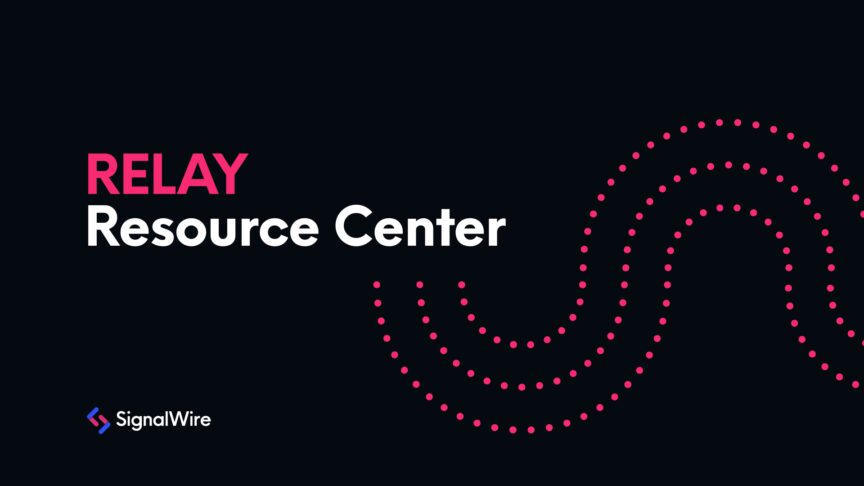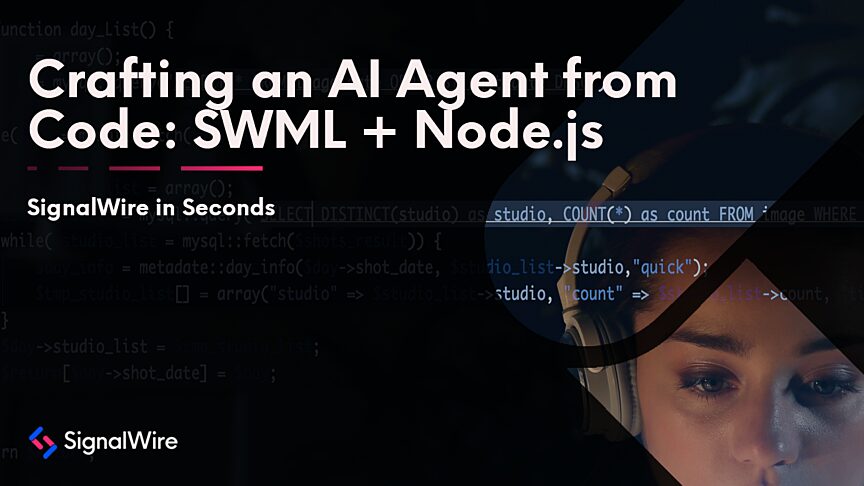The latest update is here for the SignalWire RELAY Realtime SDK with the introduction of RELAY v4. This is a significant upgrade that redefines the way developers build using the RELAY SDK.
Applications built on RELAY v3 won't undergo drastic changes in RELAY v4. Instead, developers will enjoy a unified environment where they can group complex features for more visibility, less code, and faster development time, ultimately leading to a more efficient and reliable development process.
The architecture of RELAY v4 allows for integrating different modules and components more easily, enabling applications to be extended and customized as needed. This flexibility gives you more control over the behavior and functionality of applications.
In this post, we'll explore the key features of RELAY v4, its advantages over previous versions, and how it improves the development process.
Simplified Development and Unified Client Architecture
One of the most significant enhancements in RELAY v4 is the introduction of a unified client architecture. In RELAY v3, separate namespaces or applications were required for different functionalities like voice, messaging, and video. While effective, this approach led to code redundancy, increased complexity, and limited visibility into application behavior.
With RELAY v4, developers can consolidate all elements of a project into a single space to streamline development and debugging. This offers an easier development experience and makes following the code much simpler. With reduced code complexity, developers can build communication applications more efficiently and with fewer bugs.
Advanced Event Listening
Event listening plays an important role in building responsive and interactive applications. By listening for events and responding to them in real-time, programs can respond to various events such as incoming calls, message reception, or changes in the status of ongoing operations.
In RELAY v3, event listening was relatively straightforward but somewhat limited in scope. Listening for events was limited to using the .on() method, which allows for specifying the type of event and defining a callback function to handle that event.
RELAY v4 provides more types of event handling for tracking a broader range of events, including playback, detection, recording, and more. This advanced event listening capability enhances application visibility and error tracking and allows different parts of your applications to respond proactively to various scenarios.
In addition to listening for events at a higher level, you can now listen for events on specific sessions or operations for more precise event handling. This offers greater flexibility and control over how and when your applications can respond to events.
Overall, the transition from RELAY v3 to v4 brings significant improvements to event listening for building more sophisticated and responsive real-time communication applications.
Enhanced Promise Resolution
Asynchronous communication is a cornerstone of modern application development, and RELAY v4 simplifies it with enhanced promise resolution. In RELAY v3, promise resolution is limited to basic on/off functionality. However, RELAY v4 introduces more advanced promise resolution methods, providing detailed insights into the status of asynchronous operations.
In RELAY v3, promises were primarily used to manage the completion or failure of actions such as making phone calls, sending messages, or executing other communication-related tasks.
RELAY v4 introduces new methods for controlling when promises should resolve. Methods like .onStarted() and .onEnded() allow you to specify exactly when a promise should resolve, whether it's at the start or completion of an operation. This level of granularity provides more control over asynchronous operations and allows for more dynamic and responsive application behavior.
This also provides enhanced error handling capabilities within promises. By providing more detailed error reporting and the ability to track and respond to errors more effectively, v4 allows for building more reliable applications. This includes better tracking of errors across asynchronous operations and the ability to handle and recover from errors more gracefully.
By leveraging these advanced promise resolution methods, you can orchestrate complex workflows more efficiently, ensuring seamless communication between different parts of an application.
With more intuitive and flexible ways to manage asynchronous operations, code is cleaner and easier to maintain. This reduction in code complexity leads to faster development times, fewer bugs, and easier maintenance of applications built on RELAY v4. For examples of how v4 simplifies code, refer to our developer documentation.
Upgrading to RELAY v4
The improved event handling and promise resolution in RELAY v4 make it easier to debug and troubleshoot applications. By reducing code complexity, streamlining development workflows, and providing a unified environment, RELAY v4 enables developers to build more sophisticated and scalable applications than ever before.
Overall, while end-users may not directly perceive the changes introduced in RELAY v4, developers will benefit on the backend from a more streamlined, efficient, and flexible development experience, leading to faster development cycles, improved application performance, and easier debugging and troubleshooting.
Are you ready to take your real-time communication applications to the next level? Upgrade to SignalWire RELAY v4 today and experience the future of interactive communication. Start building for free today by signing up for a SignalWire Space and bringing your questions to our community on Slack.


